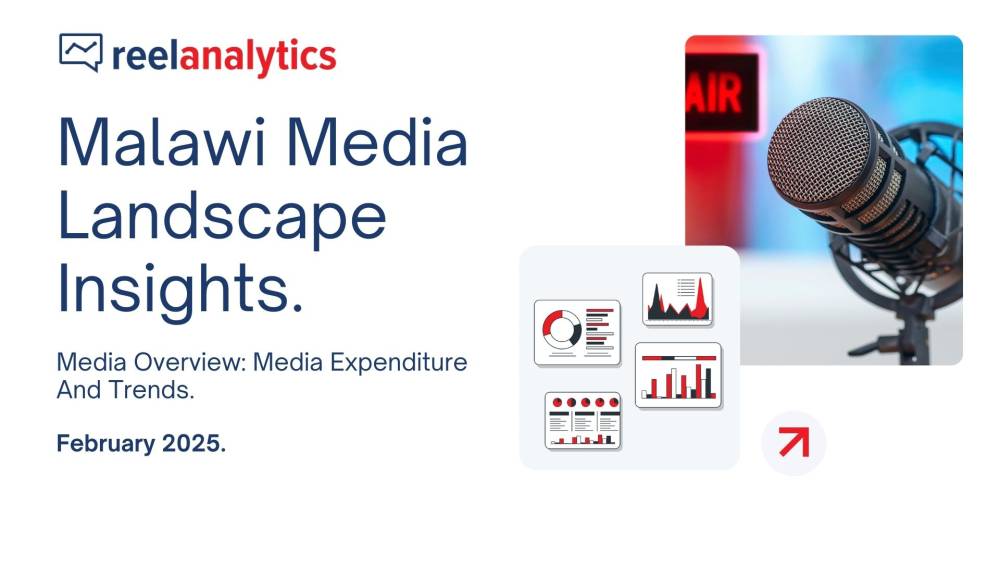Malawi Media Insights: Media Development, Advertising Spends And Trends| February 2025 Data

The Malawian media landscape has evolved significantly since the early 2020s, with notable shifts in audience preferences and advertising strategies. According to recent data, while radio remains the dominant medium across the country, digital media continues to make incremental gains in urban areas.
Current Media Landscape
As of February 2025, Malawi's internet penetration rate stands at 18% of the total population, reflecting a modest increase of 100,000 users (+2.6%) since January 2024. However, this still means that 82% of Malawians remain offline, highlighting the continued importance of traditional media channels. Social media adoption remains relatively low at 8.2% of the population, though this represents growth compared to 2022 figures, when social media users represented only 4.1% of Malawians.
Radio continues to dominate the media landscape, particularly in rural areas where approximately 82% of the population resides. Television access has grown moderately in urban areas, while print media remains concentrated in major cities and towns.
Media preferences continue to vary significantly between rural and urban areas:
- Urban areas: Television, social media, radio, and mobile phones remain the primary sources of information.
- Rural areas: Community radio, mobile phones, and traditional communication methods dominate.
- Language preferences: While English remains the official language, Chichewa (understood by over 70% of the population) continues to be the most common broadcast language alongside English.
Local community radio stations broadcast in regional languages like Chitumbuka, Chiyao, and Chitonga.
Advertising Landscape
The February 2025 Reelanalytics advertising report provides valuable insights into advertising expenditure across Malawi's media channels:
Overall Spending By Industry
The Society sector leads advertising expenditure, with major contributors including the World Food Program (WFP), the European Union, and Development Media International. This is followed by the Finance sector and Health-related advertising.
Media Distribution
- Radio: Accounts for 84% of total advertising expenditure, reflecting its continued dominance in reaching the Malawian population.
- Television: Represents approximately 16% of advertising spend.
- Print: This shows minimal advertising investment compared to broadcast media.
Chivomelezi Radio emerges as the dominant recipient of radio advertising funds. The Mukuru Wallet campaign received the most significant portion of total radio advertising expenditure and ad volume, exclusively promoted through Chivomelezi Radio.
TV advertising campaigns were distributed across three main channels: Times TV, MBC TV, and Zodiak TV. The Electricity Supply Corporation of Malawi (ESCOM) campaign received the largest portion of TV advertising expenditure. The Times Group garnered the highest number of advertisements throughout the month.
Although minimal compared to broadcast media, print advertising continues primarily through the two leading national newspapers, The Nation and The Daily Times, each with a circulation of approximately 35,000 copies. Malawi News recorded the highest number of advertisements, with UNDP being the most prominently featured brand.
Future Outlook
The Malawi media environment is likely to continue its gradual transition, with radio maintaining dominance while digital and television platforms slowly increase their penetration with infrastructure improvement. Mobile phones continue to play a crucial role in bridging communication gaps, with WhatsApp remaining particularly important for two-way communication.
Several factors continue to influence media accessibility in Malawi:
- Infrastructure limitations: Electricity access remains inconsistent, particularly in rural areas, limiting access to television and internet services.
- Cost barriers: The cost of media devices and internet access remains prohibitive for many Malawians, with the majority living on less than $2 per day.
- Language and literacy: With adult literacy rates at approximately 72% for men and 66% for women, and primarily in urban areas, radio's dominance is partly attributed to its accessibility regardless of literacy level.
- Verbal communication: Village meetings, community groups, and religious gatherings remain important information channels.
Advertisers appear to be aligning their strategies with these realities, with primary investment in radio advertising while maintaining a strategic presence on television for urban audiences. Social development organisations, financial services, and health sectors are likely to remain the dominant advertisers, reflecting both the country's development priorities and consumer needs.